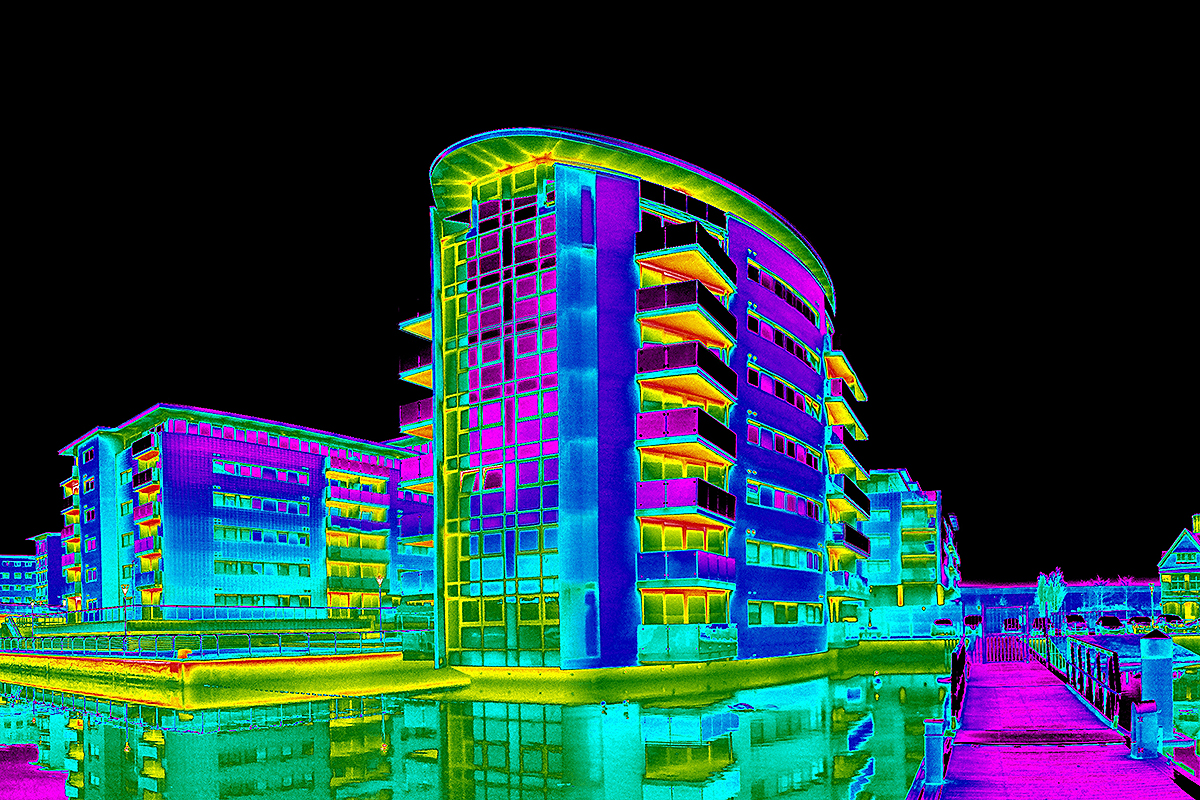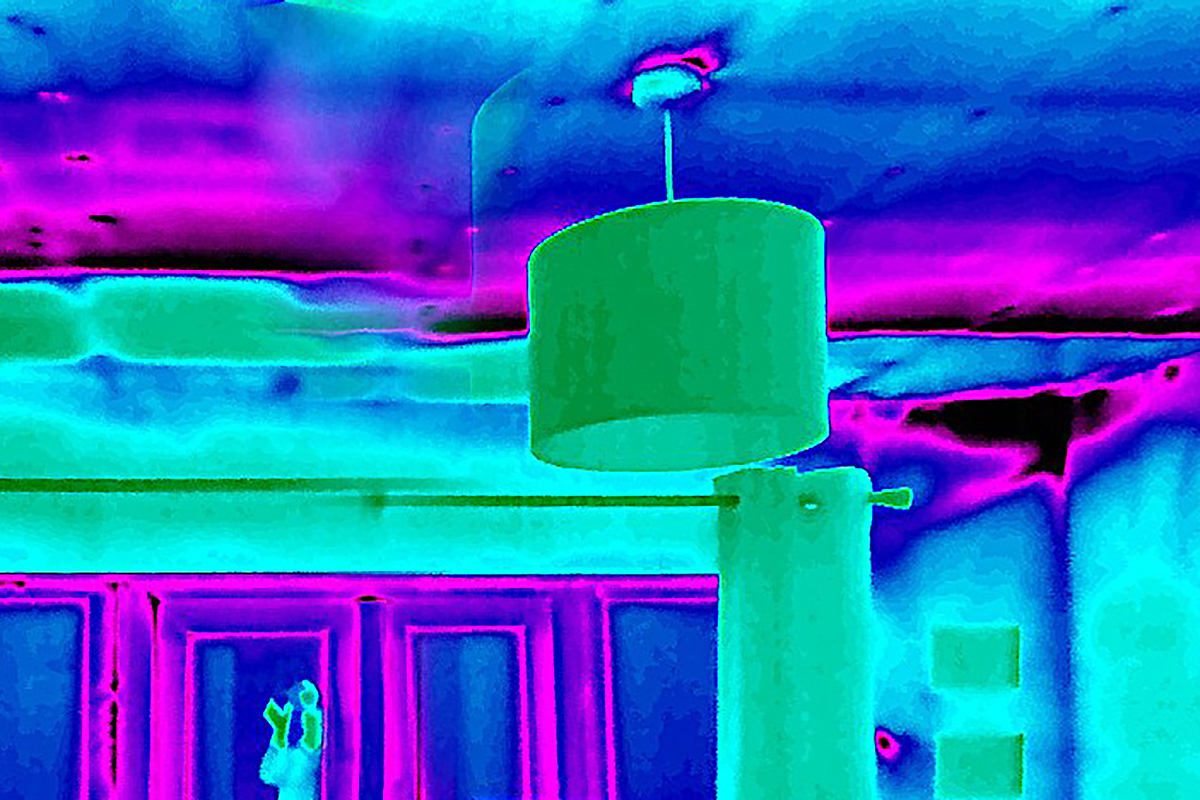
iRed engineers undertaking a thermal survey.
Housing developers and homeowners could quickly identify issues with new-build properties using thermal imaging technology, according to a leading tech business.
iRed, who already work with several major homebuilders in the UK, says that the technology is ideal for finding heat loss in buildings.
Specialist infrared cameras can quickly detect issues including air leakage, missing insulation and problems caused by construction oversight.

Thermal image of a new-build block of flats in London.
Based near Portsmouth in Hampshire, the firm has been at the forefront of infrared technology for many years.
The company has diversified into numerous areas – including drone technology – and has now partnered with the University of Portsmouth to assess and improve energy efficiency in new homes.
With both builders and residents seeking well-built, energy efficient and insulated homes, a simple survey can identify problems before properties are signed off.
Just a small gap in insulation can result in big issues, ultimately leading to huge costs in order to fix them.

Missing insulation causing heat loss, found in a new-build property.
Marcus Dawe, Operations Director for iRed, said: “The developers and the homes’ residents both want the same thing.
“And for a small expense, compared with the overall cost of a house or flat, a thermal imaging survey can uncover any hidden problems.
“The cost of these surveys has plummeted in recent years, and can help prevent a lot of wasted time and money.
“The builders and developers we work with find our surveys invaluable, as it enables them to solve problems and issues before residents move in.
“Small errors can cause huge issues, meaning residents suffer and the developer has to undertake costly repairs.
“Thermal imaging surveys are completely non-destructive, and at a similar cost to a homebuyer’s report, are the most effective way to assess a property’s thermal performance.
“We deliver thermal surveys across the country, but we also help to equip building professionals at our training centre with the skills and equipment needed to carry out the surveys themselves.
“We believe that with the low cost to developers and homeowners, thermal imaging technology should be embraced across industry.”

